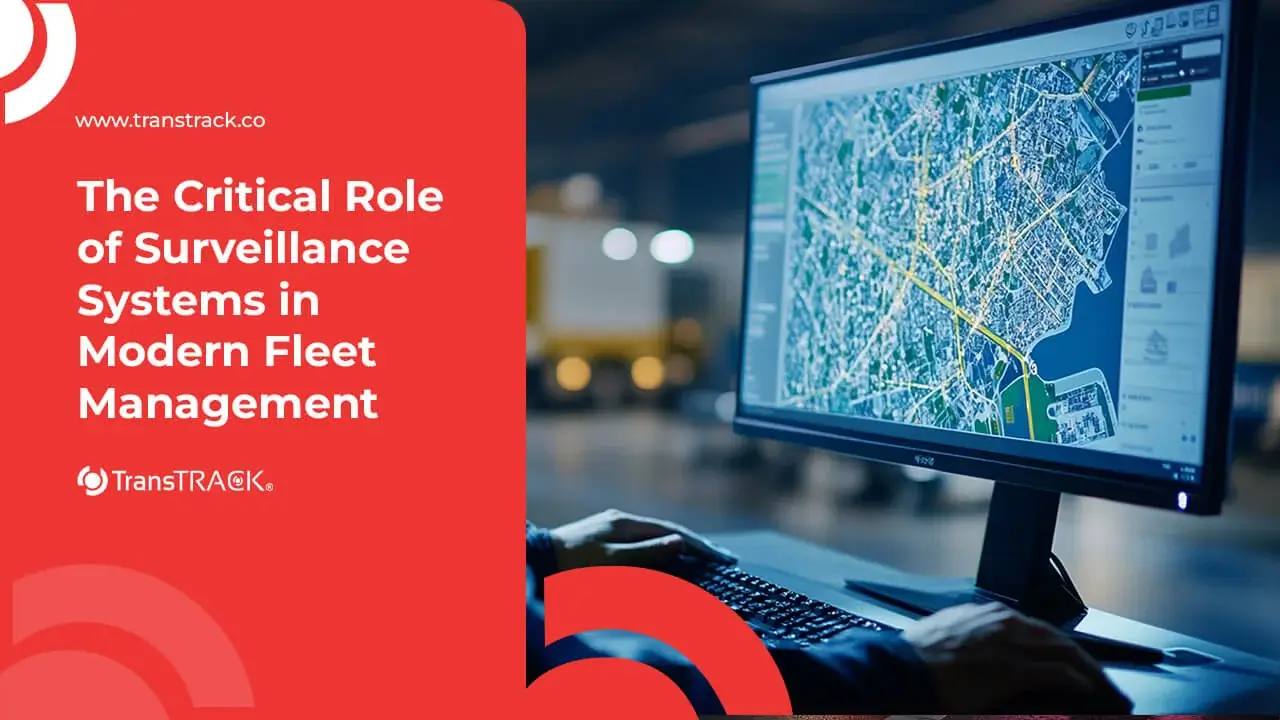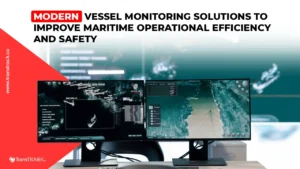The Critical Role of Surveillance Systems in Modern Fleet Management
Posted on July 30, 2025 by Nur Wachda Mihmidati

In today’s fast-paced transportation industry, managing a fleet efficiently requires more than just tracking vehicle locations. Ensuring driver safety, protecting valuable cargo, and maintaining regulatory compliance are equally critical challenges. This is where advanced surveillance systems play a vital role, providing real-time visibility and actionable data that empower fleet managers to optimize operations and reduce risks. Get to know more in this TransTRACK article!
Why Are Surveillance Systems Important in Fleet Management?
Surveillance systems play a crucial role in fleet management by enhancing safety, security, operational control, and regulatory compliance. Through tools like dashcams and in-cabin cameras, fleet managers can monitor driver behavior in real-time, identifying risky actions such as distracted driving, fatigue, or aggressive maneuvers.
This encourages safer driving habits and reduces accident risks. Additionally, surveillance systems help deter theft and unauthorized access to vehicles or cargo. When combined with GPS tracking and smart locks like E-Seal, these systems provide real-time visibility and immediate alerts in case of tampering, ensuring the safety of high-value goods in transit.
Beyond safety, surveillance systems support efficient operations and accountability. Managers can detect route deviations, excessive idling, or unauthorized vehicle use—enabling more accurate scheduling and reducing fuel waste. In the event of accidents or disputes, recorded footage provides indisputable evidence that accelerates insurance claims and protects the company from liability.
For industries with strict compliance requirements, such as hazardous materials or high-value logistics, surveillance provides visual documentation that meets regulatory standards. Overall, surveillance technology is essential for modern fleet operations, helping companies improve service reliability, control costs, and maintain a strong reputation.
Business Benefits of Fleet Surveillance Systems
Investing in fleet surveillance systems provides tangible advantages across safety, security, and operational performance. These systems are not just tools for monitoring—they are strategic assets that help companies improve efficiency, reduce losses, and deliver better service. Below are the key business benefits:
- Enhancing Driver Compliance and Accountability
Real-time video monitoring encourages safer driving habits and ensures that drivers follow company policies and road safety regulations. - Reducing Operational Risks and Insurance Claims
Recorded footage serves as clear evidence during accidents or disputes, helping to lower insurance premiums, reduce fraudulent claims, and protect the company from legal liabilities. - Minimizing Asset Theft and Cargo Tampering
Surveillance acts as a deterrent against unauthorized access, theft, and cargo tampering, providing greater control and faster response in case of incidents. - Supporting SLA Performance and Service Quality
Visual documentation helps verify delivery timelines and cargo handling, ensuring higher reliability and improving customer satisfaction through consistent service.
Common Features of Fleet Surveillance Systems
Modern fleet surveillance systems are designed to offer comprehensive visibility, improve driver performance, and strengthen operational control. Below are the most common features found in these systems, along with how they contribute to effective fleet management:
Live Video Feed from Vehicles
This feature enables fleet managers to access real-time video footage from cameras installed inside and around the vehicle. It provides immediate insight into driver activities, road conditions, and potential safety concerns. Live feed access also allows companies to respond quickly to emergencies or unusual behavior during transit.
Event-Triggered Recording
Surveillance systems are programmed to automatically record and store video when specific events occur, such as sudden braking, sharp turns, collisions, or impact shocks. These recordings serve as critical evidence for incident analysis, insurance claims, and internal reviews, ensuring that every key event is documented with time-stamped accuracy.
Driver Identification and Behavior Scoring
Through driver authentication methods (such as RFID or facial recognition), the system can identify who is operating the vehicle. It also evaluates driver behavior based on a variety of indicators including speed, acceleration, braking, and idle time. A scoring system helps fleet managers monitor individual driver performance, enforce policies, and provide targeted coaching or training.
Geo-Fencing and Route Tracking
Geo-fencing allows operators to set virtual geographic boundaries for each vehicle’s route or operating zone. If a vehicle enters or exits these predefined zones, alerts are triggered in real time. Combined with route tracking, this feature helps ensure route compliance, prevent unauthorized use, and improve route planning by analyzing travel patterns and deviations.
Impact on Safety, Cost, and Compliance
Fleet surveillance systems deliver significant benefits across three critical areas—safety, cost management, and regulatory compliance. These impacts include:
Improved Safety
Continuous monitoring and driver behavior analysis help identify and correct unsafe driving practices such as speeding, distracted driving, and fatigue. This leads to fewer accidents and a safer working environment for drivers and other road users.
Cost Reduction
Surveillance footage provides clear evidence in accident investigations, reducing insurance claim disputes and premiums. Preventing theft and cargo tampering lowers financial losses, while improved driver performance and route adherence reduce fuel consumption and vehicle maintenance costs.
Enhanced Regulatory Compliance
Accurate video and data records support compliance with industry regulations and safety standards. Surveillance systems simplify audit processes by providing verifiable documentation of driver activities, route adherence, and cargo handling, helping companies avoid fines and legal penalties.
Conclusion
Surveillance systems have become essential tools in modern fleet management, offering comprehensive benefits that enhance safety, reduce costs, and ensure regulatory compliance. By enabling real-time monitoring of vehicles and drivers, these systems help prevent accidents, deter theft, and improve overall operational efficiency. Investing in advanced surveillance technology not only protects your assets but also boosts service quality and customer satisfaction.

Take control of your fleet’s safety and performance today with the Vehicle Surveillance System from TransTRACK. Experience seamless monitoring, accurate incident recording, and actionable insights that empower your business to operate smarter and safer. Contact TransTRACK now to learn how our solution can transform your fleet management.
Recent Post
Topic :
Recommended Articles

 Bahasa Indonesia
Bahasa Indonesia







